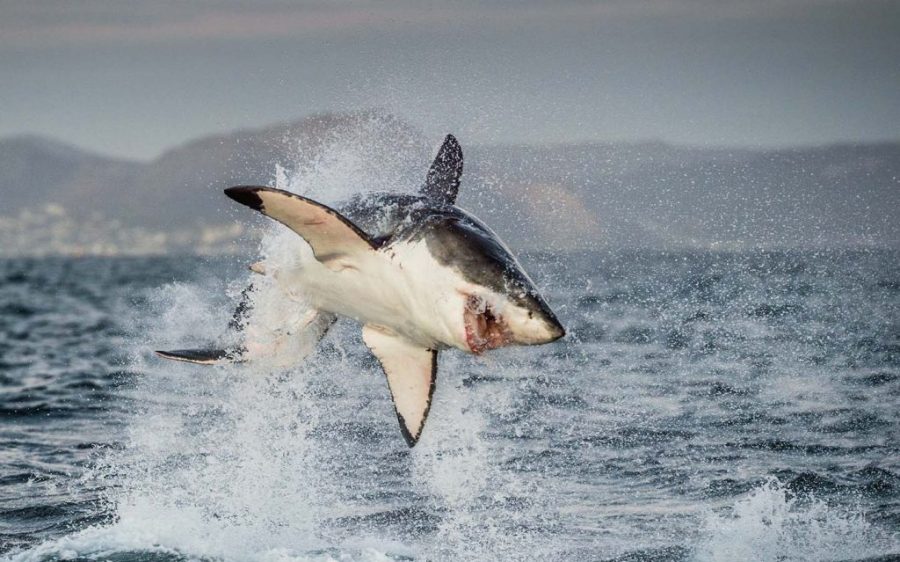A new study published in the journal Current Biology has found that strategic use of LED lighting disrupts sharks’ ability to see silhouettes, deterring potentially fatal attacks, reports the Guardian.
The Australian-led study involved towing seal-shaped decoys behind a boat for hours in the great white-rich waters of Mossel Bay, South Africa. LED lights affixed to the underside of the decoys appear to disrupt the sharks’ ability to see the decoy’s silhouette from below, reducing the rates at which sharks followed and attacked. Dr Laura Ryan of Macquarie University in Sydney, lead author of the study, told the Guardian that great whites appear to rely on the appearance of a darker object silhouetted against a lighter background. “If you flip that to a light object on a dark background, then it doesn’t seem to be something they recognise as prey.”
This is due to the great white’s limited visual acuity, or ability to see shapes and details. Juvenile great white sharks, as Ryan found in previous research, appear to be unable to clearly differentiate between seals and people paddling on surfboards from below. Such difficulties indicate that many attacks on humans may simply be a case of mistaken identity.
[See more: One of the world’s largest seizures of shark fins has been made in Brazil]
Horizontal strips of LEDs proved the most effective, making the decoy’s silhouette appear wider than it was long – in other words, not like a seal. Longitudinal strips only emphasised the seal shape, while strobe lights offered a brief glimpse of the entire silhouette that “was enough for the white sharks to start biting the decoys.”
The team towed the decoys to encourage breaching, a hunting tactic in which the shark launches an attack from below, crashing into the prey jaw-first as they breach the surface at speeds up to 64 kph. Such high-intensity attacks are rare, though, and the team says more research is needed to see how great whites respond to the LED light-camouflage on static decoys that mimic a surfer waiting for a wave. Testing it with actual surfboards is also on the to-do list. “Surfers can be a little bit fussy with their surfboards,” Ryan said. “As a surfer, I want it to be usable.”
Unprovoked shark attacks are incredibly rare with an average of 63 worldwide each year, only five or six of which prove fatal. Most involve people on boards, like surfers or paddle boarders, and the few fatalities are largely caused by great whites. The study notes that the effectiveness of LED camouflage on other species known to attack humans, like bull or tiger sharks, would need to be tested as these species employ different hunting behaviours.






